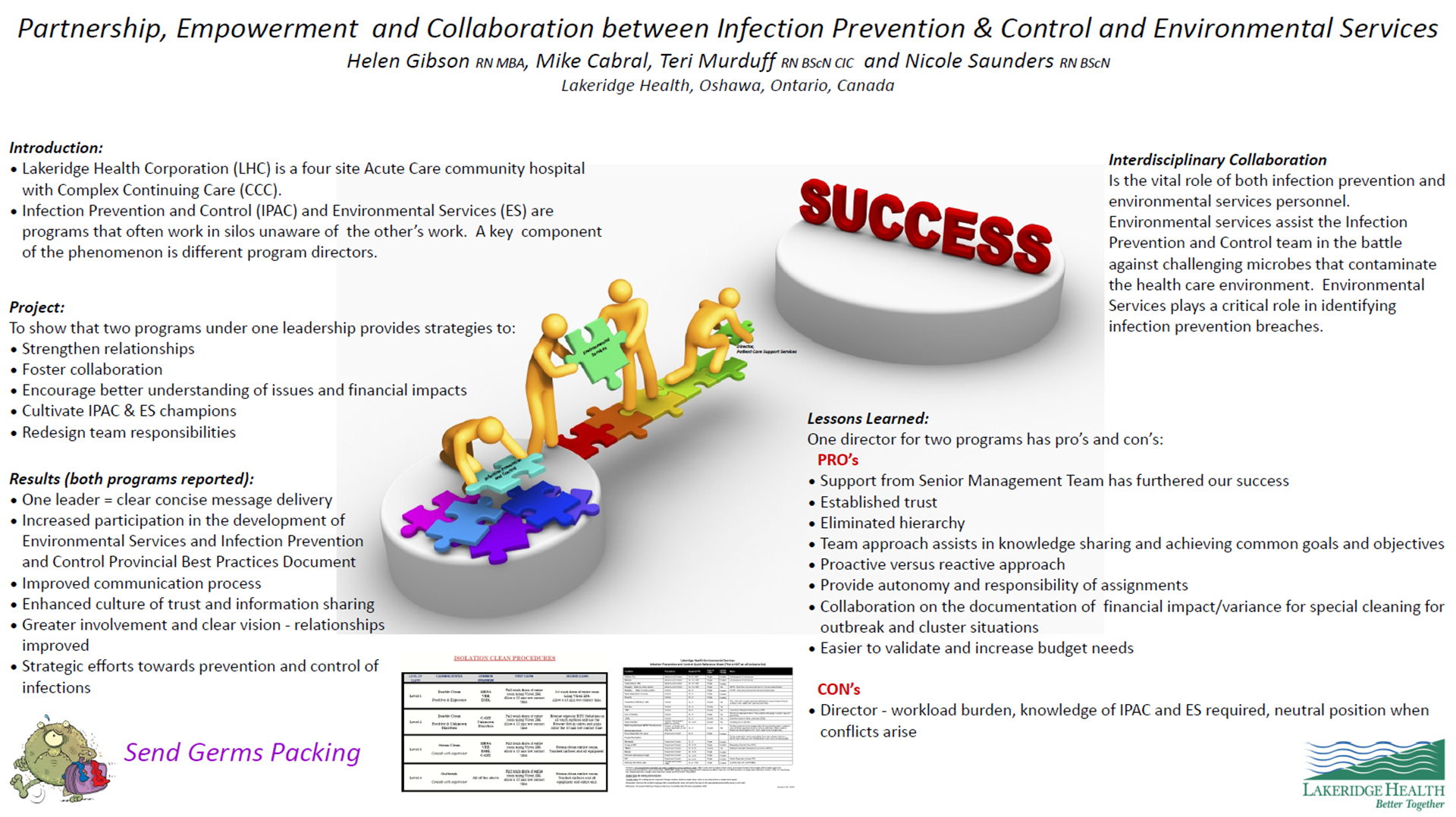Meet an Innovator: Lakeridge Health

Uniting EVS and IPC has transformed its organization
Great teams typically have a number of characteristics in common – a great leader, a common goal, shared values, and complementary skills. When these teams are put into action, extraordinary results can be achieved.
Meet Lakeridge Health, which demonstrates daily what it takes to provide a safe environment for patient care. Lakeridge Health is one of Ontario’s largest community hospitals where about 5,000 healthcare professionals and volunteers work across four hospital sites and three emergency rooms, caring for more than 1,600 people each day.
In 2006, Lakeridge Health challenged Helen Gibson, then responsible for infection prevention, to undertake the added role of managing environmental services (EVS), by becoming the director of patient care support services. This approach was trend-setting because EVS and clinical staff typically report into two different functional areas in hospital organizations. Uniting these departments under one umbrella helped better align everyone towards a common goal.
Gibson saw this as an opportunity to leverage each team’s expertise and complementary skills across the new department. Team members were deeply committed to delivering excellent patient care, and she saw this new structure as a way to optimize resources to improve the collaboration between the departments and further improve the patient experience.
As a first step, she worked with the team to establish clear goals, a commitment to a common purpose and helped them develop mutual respect for the role each team member played in improving patient outcomes.
“Although EVS professionals support the clinical teams in many organizations, they aren’t always as highly valued as they should be,” said Gibson. “Implementing a new, integrated approach has positively altered this way of thinking.”
Lakeridge enhanced EVS staff training. Each staff member attended a mandatory one-day refresher training, and today continually participates in ongoing training to be well-informed in infection prevention strategies and changing technologies.
Communication was also a strong influence in this positive change. Leadership understood the challenges between departments and took time to position why this change was good for Lakeridge Hospitals and its staff. This helped employees understand and embrace the change. To further ease the transition and gain acceptance across the organization, a system-wide campaign was launched to create awareness and also educate all facilities about the benefits and value that this centralized structure would create.
“By keeping people well informed, we were able to get individuals on board with the new changes,” added Gibson. “We highlighted to EVS their value in the organization, and their critical role played in maintaining patient safety. Today the EVS team continually educates me and the clinical staff on how we can work more efficiently, and collaborate to provide better care.”
This patient care model allows for decision making that supports both the clinical and operational goals of the facility, and more importantly, allows team members to speak a common language. The new structure has led to numerous benefits, including improved productivity, shared understanding and collaboration. This structure has also increased job satisfaction, enabled a cleaner, safer hospital environment and improved patient care.
“We’re here for our patients and this approach has helped bring about synergy by aligning everyone under a common objective,” added Gibson. “We don’t just have a separate infection control team; we have nearly 300 people on the infection control team who advocate for patient health and safety every day.”
As a strong leader, Gibson recognizes good work and celebrates success! Congratulations to Lakeridge Health Team for being leaders and innovators!
Here is the program overview:


